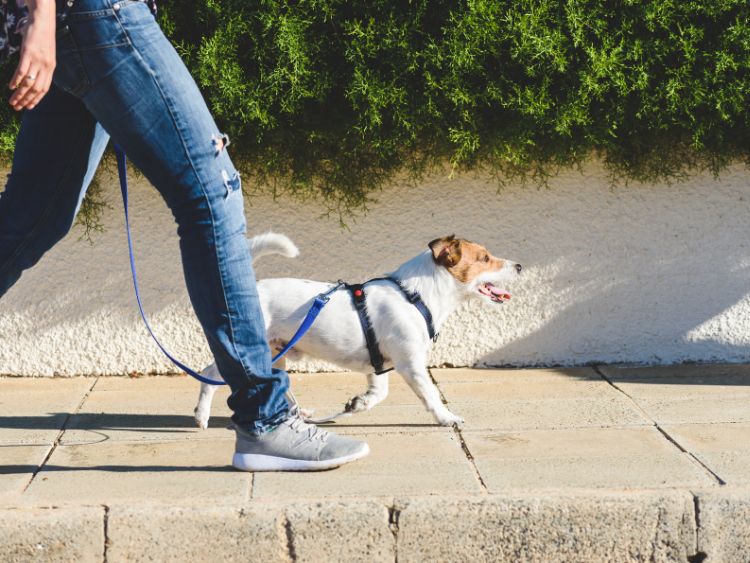Dogs have a way of filling our lives with joy, laughter, and sometimes a bit of mystery. One such curious behavior that might have pet owners scratching their heads is when a dog starts walking sideways. It’s not just quirky; it could be a signal that warrants a deeper look. In this comprehensive exploration, we’ll delve into the reasons behind this behavior, how to address it, and ways to ensure your furry friend remains happy and healthy.
Have you ever seen your dog suddenly start to walk sideways and wondered, “What’s going on?” This unusual gait can seem amusing, but it often has underlying causes that might not be immediately apparent. From medical conditions to behavioral quirks, understanding why your dog adopts this sidestepping routine is crucial for any conscientious pet owner.
What Causes Sideways Walking in Dogs?
Sideways walking, or crabbing, in dogs can stem from various sources ranging from completely harmless to needing immediate medical attention. Let’s break down the possible causes:
Medical Reasons
- Ear Infections
- Symptoms: Tilting of the head, scratching, balance issues.
- Why it affects walking: An infected ear can throw off your dog’s balance, leading to unusual walking patterns as they try to stabilize themselves.
- Vestibular Syndrome
- Common in older dogs, this condition affects the inner ear and balance.
- Signs include dizziness and difficulty walking straight.
- Musculoskeletal Issues
- Problems like hip dysplasia or arthritis can make normal walking painful, causing your dog to walk sideways as a form of compensation.
Behavioral and Environmental Factors
- Habitual Behavior: Some dogs develop unique walking styles over time due to their physical environment or learned behaviors.
- Playfulness: Occasionally, a dog might walk sideways in a playful manner, especially during a spirited game or when they’re overly excited.
Recognizing the Signs: When to Be Concerned
While the occasional sideways walk might not be alarming, consistent or sudden changes in your dog’s gait should prompt a visit to the vet. Look out for these signs:
- Persistent walking sideways without obvious triggers.
- Signs of pain like whimpering or reluctance to move.
- Accompanying symptoms such as limping, head tilting, or lethargy.
Steps to Address Sideways Walking
If you observe your dog walking sideways, consider the following steps:
- Observation: Note when and how often the behavior occurs to help your vet diagnose the issue.
- Veterinary Visit: Schedule a check-up to rule out or treat any medical issues.
- Physical Therapy: For musculoskeletal causes, a professional might recommend exercises to strengthen muscles and joints.
- Medications: If an infection or inflammation is the cause, your vet may prescribe medications to help your dog recover.
Preventative Measures: Keeping Your Dog on the Straight and Narrow
Prevention is often the best cure. Here are some tips to keep your dog healthy and reduce the risk of sideways walking:
- Regular Vet Check-ups: Catch potential health issues before they become serious.
- Balanced Diet and Exercise: Keep your dog physically healthy and their weight in check to avoid joint and muscle issues.
- Mental Stimulation: Engage your dog’s mind daily to prevent stress and anxiety, which can contribute to unusual behaviors.
FAQs About Dog Walking Sideways
Q: Is sideways walking ever normal for dogs? A: Occasionally, dogs may sidestep during play or when maneuvering around obstacles. However, regular or sudden sideways walking without an obvious reason is not normal and should be checked by a vet.
Q: Can puppies exhibit this behavior? A: Puppies might walk sideways due to playful behavior or while learning to coordinate their movements. Still, it’s wise to monitor their development and ensure there are no underlying issues.
Q: How quickly should I react if my dog starts walking sideways? A: If the behavior is new or accompanied by signs of distress, schedule a vet visit as soon as possible to determine the cause and necessary treatment.
Conclusion
When you notice your dog walking sideways, it’s essential not to dismiss this behavior as merely quirky or amusing. While it might be harmless, it could also be a sign of underlying issues requiring attention. By understanding the potential causes and knowing how to respond, you can ensure your dog maintains a happy, healthy life. Keep an eye out, stay informed, and always lean on the expertise of your veterinarian to guide you through these odd behaviors. Your furry friend depends on it!
